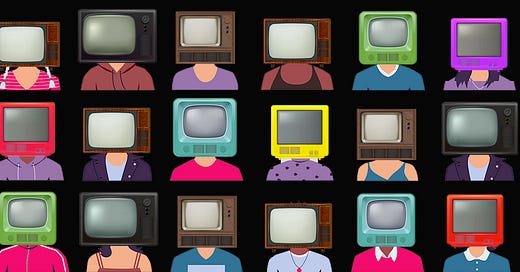Have you ever found yourself in a conversation where you had to explain the definition of the metaverse to someone? For some, whether it’s for generational or other reasons, it’s a tough concept to grasp, because it doesn’t feel very tangible (yet). So if you’ve had to define it for someone, it’s very likely that you described it as a parallel virtual world, a place where a parallel virtual version of yourself can exist — also known as your avatar.
Avatars make up the backbone of the metaverse — especially when it comes to gaming. The concept of creating an avatar is not new to the world of games, as many of them have you create a character before you start playing. But this is different. A metaverse avatar is much more than a videogame character you create. You’re not limited to an avatar on a game-by-game basis, where you’re constrained by the options provided by each videogame’s creators. It’s a much more open experience — so it becomes an even better way to manifest your personality, to express your identity and creativity, and a vehicle through which you can connect with others. Essentially, an avatar in the metaverse can be seen as a fluid, persistent extension of yourself.
The freedom of expression offered when crafting an avatar for the metaverse is virtually endless, because it’s not limited by physical matter — you can express yourself however you want. You can have blue skin, three heads, skeleton legs, or even walk around as a giant hot dog. Nothing stands in the way of becoming any version of yourself you can possibly imagine — and even changing your entire look and body parts on a daily basis, if that’s what your heart desires.
But even going beyond self-expression, there’s something about the role of avatars in the metaverse that makes them even more important. The interoperability suggested by the idea of a user-owned internet, like web3, or even for web2 metaverse platforms like Roblox, means that you can bring the same avatar into a multitude of experiences, and the items you equip on your avatar are carried with you throughout your metaverse journey, regardless of the destination. Regardless of which game you play or which world you visit, you are still the same YOU.
This is a paradigm shift when it comes to expressing a virtual manifestation of your IRL identity. We believe that eventually, people will come to care just as much (or even more) about their virtual selves as they do about their physical selves. We already see this happening when it comes to virtual goods selling for more than their IRL counterparts (see: a virtual replica of a Gucci handbag sold on Roblox for more than the real one), but as it’s still early days for the metaverse, those remain as outliers. But as virtual worlds begin to take shape, the importance of avatars will only grow. It will soon become unthinkable for a brand to create items only for physical human beings — they’ll be missing out on a huge opportunity.
Whether people will eventually care more about items for their avatars than they do about items for themselves remains to be seen, but it’s undeniable how important avatars already are as we approach this new age of technology and find brand new ways to express ourselves and connect, socialize, and play together.
As our team develops NFTV, we are adamant about making avatar creation a central piece to the experience. Our approach is for users to create a Tubehead version of themselves they are excited to show off to the world. Our dream is for NFTV to be an inclusive, welcoming place to all — and that users truly feel “at home” inside their Tubehead selves. So if you have any dreams or ideas for what kind of Tubehead you would want to become, please leave them in the comments and we can certainly make that dream become reality — at least virtually speaking.
You are reading Channel Zero by NFTV. If you’re looking for a fun way to engage with the metaverse, web3 and NFTs, then you are ready to become a Tubehead like the rest of us! Stay tuned for more stories as we work to get NFTV on the air by subscribing to our Substack and following us on Twitter.
Today’s words are from Luiza Justus. Artwork from Lee Ann Holt.




